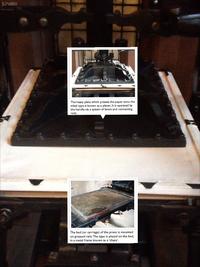Difference between revisions of "Is content in an appropriate format?"
Matt Ramirez (talk | contribs) |
Matt Ramirez (talk | contribs) |
||
| Line 13: | Line 13: | ||
<div>With increased broadband speeds, users have become accustomed to content being displayed in a few seconds, this can be a real challenge on a mobile device on a restricted network signal or slow WiFi connection. It is imperative that any video employed is optimised for mobile delivery and split into clips of no more than 5 minutes. It may be appropriate to create a mobile specific version targeting smartphone or tablet devices. If you are hosting your videos on a site like YouTube or Vimeo, in some cases a lower resolution version will be played to minimise lag time. </div> | <div>With increased broadband speeds, users have become accustomed to content being displayed in a few seconds, this can be a real challenge on a mobile device on a restricted network signal or slow WiFi connection. It is imperative that any video employed is optimised for mobile delivery and split into clips of no more than 5 minutes. It may be appropriate to create a mobile specific version targeting smartphone or tablet devices. If you are hosting your videos on a site like YouTube or Vimeo, in some cases a lower resolution version will be played to minimise lag time. </div> | ||
<div>There are a number of free tools available that encrypt video into formats that enable the user to view video in live view as a movie texture. Although there are some usability issues associated with this form of playback, it can create an immersive and memorable user experience.</div><br/> | <div>There are a number of free tools available that encrypt video into formats that enable the user to view video in live view as a movie texture. Although there are some usability issues associated with this form of playback, it can create an immersive and memorable user experience.</div><br/> | ||
| − | <div>[[File:movietexture.jpg| | + | <div>[[File:movietexture.jpg|300px]]</div> |
<h2>3D Models</h2> | <h2>3D Models</h2> | ||
---- | ---- | ||
<div>Utilising images can be useful in allowing users a more detailed view of an object, particularly when layered on the physical object. Using an image editing piece of software (Adobe Fireworks, Gimp) can significantly reduce file size and improve performance. As a measure, you can normally optimise a .png file to 10% of its original file size with little visible difference.</div><br/> | <div>Utilising images can be useful in allowing users a more detailed view of an object, particularly when layered on the physical object. Using an image editing piece of software (Adobe Fireworks, Gimp) can significantly reduce file size and improve performance. As a measure, you can normally optimise a .png file to 10% of its original file size with little visible difference.</div><br/> | ||
<div>[[File:3dmodels.jpg]]</div> | <div>[[File:3dmodels.jpg]]</div> | ||
Revision as of 15:03, 10 July 2012
It is important when collating content delivered through mobile AR, that you consider the usability aspect for users. The way users interact and interrogate resources on a desktop is very different to the experience they expect on a portable device. The reduced screen real estate necessitates that mobile specific resources should be presented in bite-sized chunks, piquing their interest to study further. Content developers should be careful to minimise any textual content, instead presenting a summary with links to deeper online content if necessary. AR is by definition a visual medium so engaging the user is integral to how much impact it has. Merely duplicating existing learning materials from a VLE or handout should be avoided. Included below is an overview of the main content types and ways to display them in an AR experience.
Contents
Text
Use text sparingly as the user can become overwhelmed if confronted with content that is text heavy. Consider also, that many portable devices are smaller in size and resolution, so in terms of accessibility, this can be problematic. Use a small amount of text to gain the attention of the user, so that they can decide to link to further online resources. Accompanying text with images captures the users attention and is often adept in elucidating difficult concepts.
Images
Utilising images can be useful in allowing users a more detailed view of an object, particularly when layered on the physical object. Using an image editing piece of software (Adobe Fireworks, Gimp) can significantly reduce file size and improve performance. As a measure, you can normally optimise a .png file to 10% of its original file size with little visible difference.
Video
With increased broadband speeds, users have become accustomed to content being displayed in a few seconds, this can be a real challenge on a mobile device on a restricted network signal or slow WiFi connection. It is imperative that any video employed is optimised for mobile delivery and split into clips of no more than 5 minutes. It may be appropriate to create a mobile specific version targeting smartphone or tablet devices. If you are hosting your videos on a site like YouTube or Vimeo, in some cases a lower resolution version will be played to minimise lag time.
There are a number of free tools available that encrypt video into formats that enable the user to view video in live view as a movie texture. Although there are some usability issues associated with this form of playback, it can create an immersive and memorable user experience.
3D Models
Utilising images can be useful in allowing users a more detailed view of an object, particularly when layered on the physical object. Using an image editing piece of software (Adobe Fireworks, Gimp) can significantly reduce file size and improve performance. As a measure, you can normally optimise a .png file to 10% of its original file size with little visible difference.



